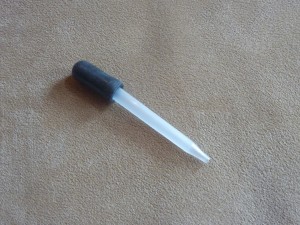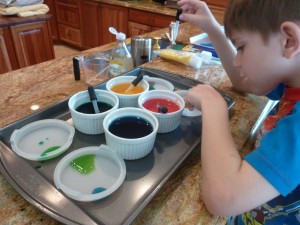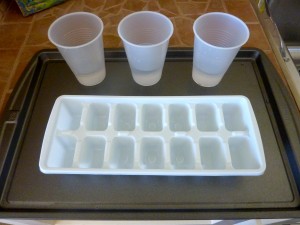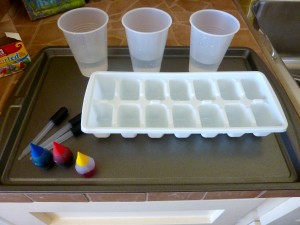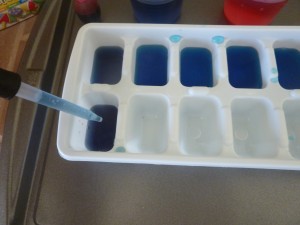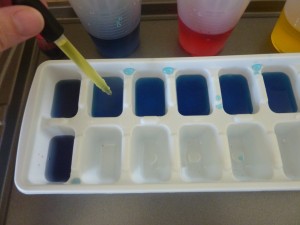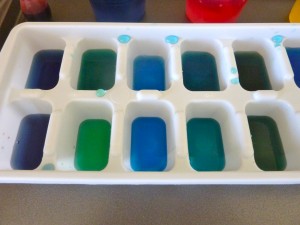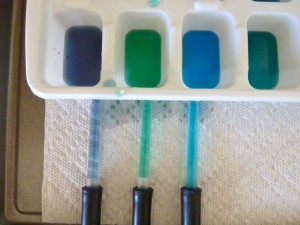Droppers, Bulb Syringes and Turkey Basters

These items are great to have in a My Obstacle Course kit because they add fun and build hand muscles with hardly any set up – just add water and some bowls or cups and you are good to go!
They also help to build some other skills, like planning, patience and focus (in a way that I found was tolerable for Andrew 🙂 ) because for it to work, the child has to do several things:
- squeeze the top
- hold it squeezed while putting the bottom in the liquid
- release the bulb slowly to allow the liquid to get sucked into the tube.
These muscles also have to work to squeeze the liquid back out. He learned pretty quickly how to do it to get the most liquid and would talk to himself about how it worked and what he was going to have to do next time. (Andrew: “Oh, not a lot. Try again and get some more next time. Hooray! Look at all the water!”)
I found a package of droppers (I think 12) at my local teacher store and I do find that having more than one is helpful. The bulb syringe was something that was left over from when Andrew was a baby. They also sell these as part of ear cleaning kits. Look no further than your kitchen drawers to find the turkey baster, however, I did buy a separate one for Andrew’s use (really inexpensive one from the grocery store) to keep with my other station materials.
Uses:
- making different colors when combined with colored water
- transferring water from one container to another in order to fill it to a certain level
- squirting water on something (putting out fire blog post)
Past Posts Using These Items:
Adding any of these items to a My Obstacle Course kit is a super easy way to encourage experimentation with water while also helping to build muscles that will help with handwriting. I love things that make this fun!!
Engage, Encourage and Empower!
